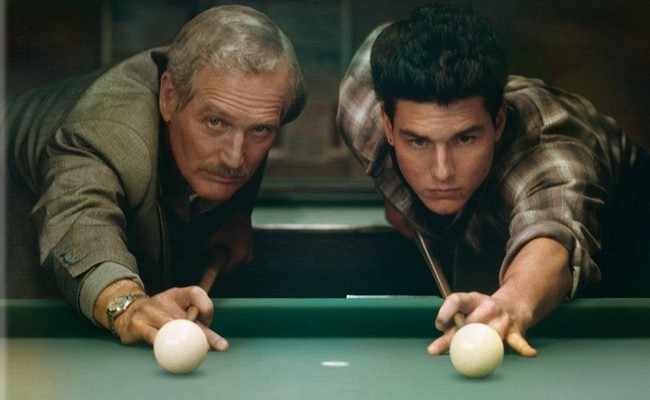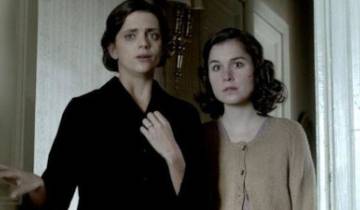
The fate of losers
By Pedro García Cueto
There are films that fly over the theme of the loser, beings who are condemned to feel failure in their flesh, such as Martin Scorsese's Taxi Driver (1975), where loneliness becomes a hell that leads to madness. There are also losers who try to get out of that failure, like Eddie Felson in The Hustler (1961) by Robert Rossen, a magnificent film where Paul Newman was great. A new version of this character who constantly plays his luck in the pool, who welcomes a girl (Piper Laurie) in a relationship that is destined to fail, was not expected, but it happened, in 1986 The Color of Money was released directed by Martin Scorsese, one of the most impressive and brilliant directors of recent decades.
The history of the film began when in September 1984, after shooting of After Hours had finished and while he was in London, Scorsese received a letter from Paul Newman in which he proposed that he join the project for The Color of Money, since that Newman had been impressed upon seeing Raging Bull (1980) and was convinced that Scorsese was the right director for this return of the Eddie Felson character.
The story was based on the novel by Walter Tevis, the same author of the novel that gave rise to The Hustler, which clearly seemed like a sequel to Felson's story. The project for The Color of Money had been wandering around the Hollywood studios for five years, it had reached Columbia and Twentieth Century Fox without materializing in a firm project. But the interest of a powerful man like Paul Newman and his agent, the famous Mike Ovitz, made the project begin to take on real life. Two old acquaintances of Scorsese, Michael Esiner and Jerry Katzemberg, who had already wanted to work with the director from their time at Paramount, came on board. They were now top executives at Touchstone Pictures and were determined to get the movie done as producers.
Evidence of Newman's involvement in the project is the fact that he had to mortgage part of his salary to get Touchstone to agree to the $1986 million budget. In addition, Scorsese was told that it was forbidden to go back to shooting in black and white if he wanted to move forward with the film. Filming began in January XNUMX, completed in forty-nine days and with a saving of one million dollars. There were no improvisations in the film and the work of Newman and a young Tom Cruise was prepared two weeks in advance. For the pool scenes, an instructor, Michael Sigel, and various professional players were involved. The film was shot in various pool halls in Chicago, although Toronto was initially considered.
It is important to point out that this is not a sequel because Scorsese gives personality to his project and distances it from Rossen's film (it must be said that the latter was magnificent), since in The Color of Money Eddie Felson no longer understands the defeat as an end, but he will know how to bear failure, he will understand that it is part of life. If there is something self-destructive about the character, along the lines of other Scorsese leads such as Travis, Jimmy Doyle and Jake La Motta, Felson has already redeemed himself. He has lived through twenty-five years of hell (you have to remember that in The Hustler, Eddie gives up pool when the men of the character played by George C. Scott destroy his hand). Now Eddie is looking for a successor, someone who can be him many years younger and finds him in the rooster Vincent (very convincing Tom Cruise in the movie) who arrives with his girlfriend Carmen (Mary Elizabeth Mastrantonio), Now, Eddie is the teacher, who cares less about winning than leaving his mark on the disciple.
When Vincent already knows, thanks to Eddie, the traps, tricks and pettiness of the profession, Eddie knows that they must separate. There is undoubtedly a father-son relationship between the two. When Vincent allows himself to be won over by Eddie, it is a form of humiliation, but it is also an offering, the demonstration of the gift that he wants to give the disciple to the teacher, the sign of his gratitude.
The idea of the father is unusual in Scorsese, because they never appeared in other films, Travis was alone, nothing is known about his family, neither is Jimmy Doyle and neither is La Motta, they are unprotected, lonely beings, who have no one to admire or imitate. In the case of The Color of Money, this master-disciple symbiosis takes on full meaning. There is also something mythical, Scorsese poses a generational change, the Cruise at the time of the film is a mirror of the young Newman when he filmed The Hustler.
There is undoubtedly a bankruptcy, by not knowing Felson's past in Scorsese's film, it is difficult for us to understand the epic dimension of his redemption, since Eddie was guilty of the death of Sarah (Piper Laurie) and as a consequence was punished in billiards, As La Motta was in the ring, there is undoubtedly a space that The Color of Money does not discover and only moviegoers can unravel. What Eddie does is atone for his guilt through the character of Vincent, trying to make him not fall for the mistakes of young Eddie. A glimpse of the past would have been good to better understand the underlying objective of the film and its desire to create a new billiards player without the blemishes that old Felson already has for life.
And, without a doubt, the title explains a lot, because money has color, also weight and smell, we continually see the dollars and we can feel that all that money is also the soul of the characters, they are their vital imprint, the sacrifice to which they submit for success. The luck of winning or losing is also present, they are beings who risk everything, knowing deep down that nothing is really worth it. Only the rite of the game motivates them, not the gain or loss, they live in the moment, where they are happy in that effort to be the best.
Without a doubt, Scorsese transfers the Raging Bull ring to billiards, to build a redemption film with an actor of great charisma, truly magnetic as Paul Newman, whose gaze hides a whole world that is not revealed to us but that moviegoers and connoisseurs of The Hustler we know. Both the girl and the role of Cruise give him a good replica, because the impetuous young man has to be corrected by the veteran player. It must be recognized that Cruise maintains a freshness in his role that he has been losing over time.
And how the balls move as if they were gestures of life, like the blows in the ring, ultimately tells us about an emotional and intense film, a great movie, where Scorsese sets his sights to talk about losers and winners in the scene of existence. The music is excellent, like My Baby's in Love with Another Guy, the Robert Palmer song recorded by Little Willie John, they are essential to accompany this existential duel between two men in front of the billiards ring.
There is a different movement in Scorsese compared to Rossen's film, a planning of the pool tables, a "visual extravagance" that makes this film stay with us, because it speaks of failure and redemption (with a magnificent photograph by Michael Ballhaus ), one of the most interesting themes in the filmography of the great American director.


